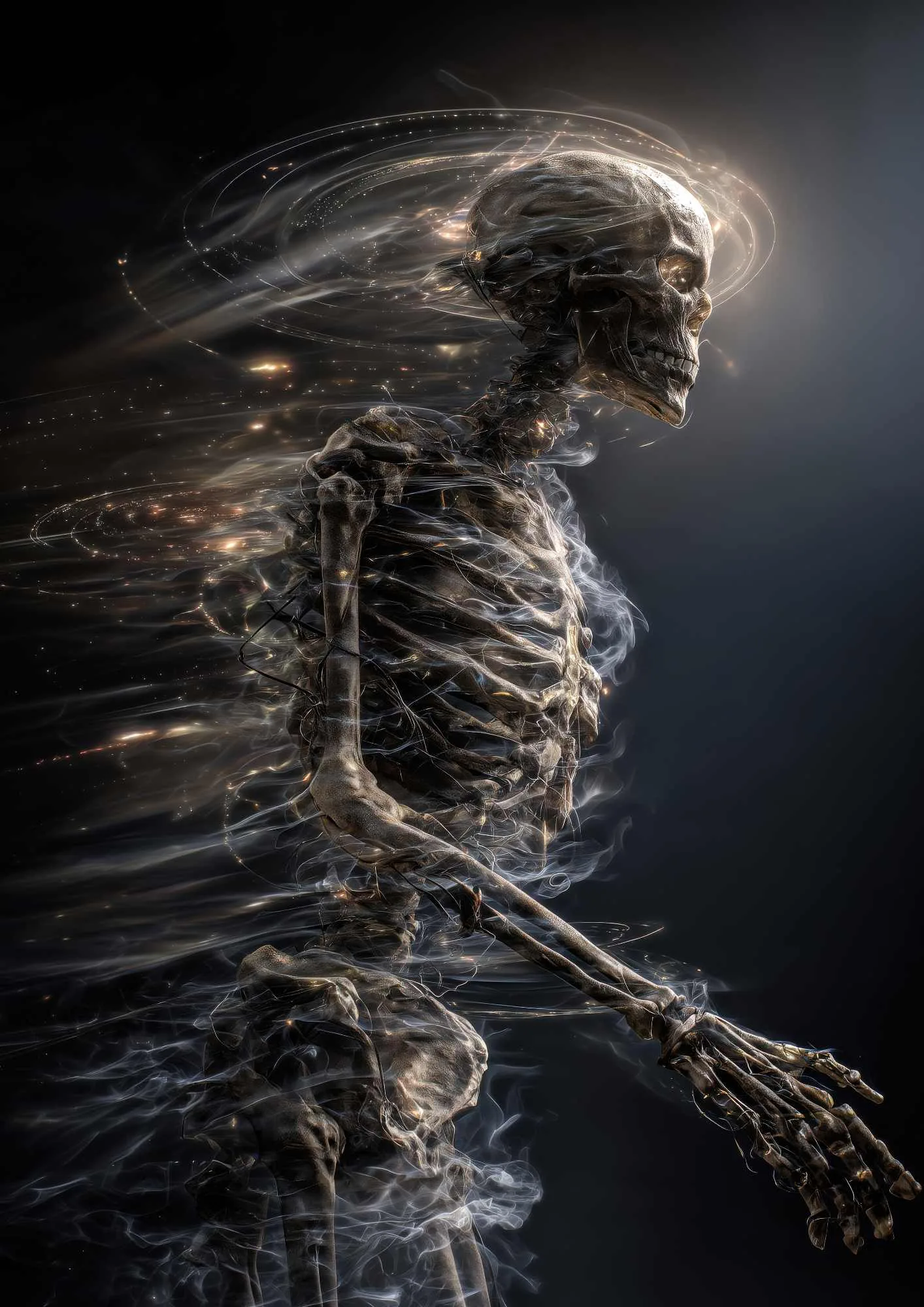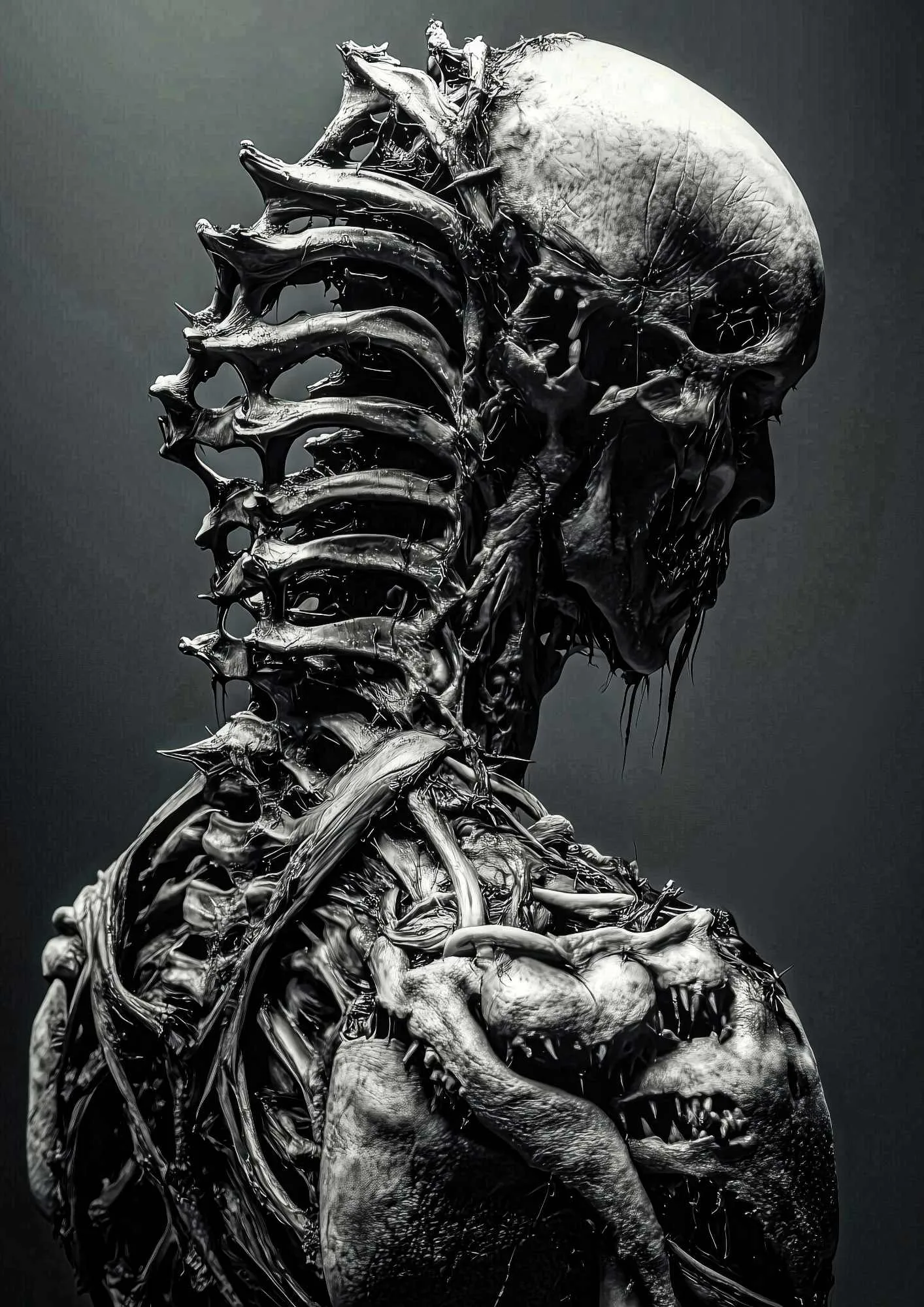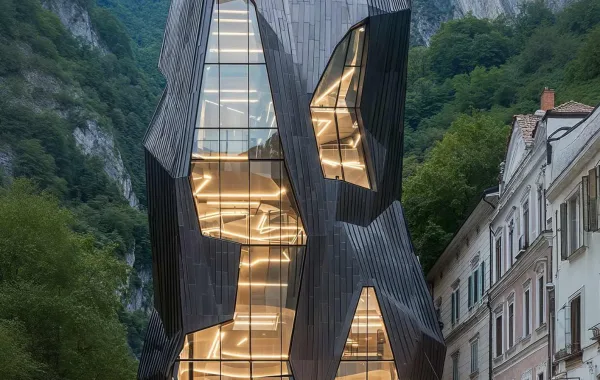Dalton Girling
Into the Dark
York, United Kingdom | @horrornoirfx
In a realm where fear becomes language and silence carries its own weight, Dalton Girling reframes horror as empathy. A filmmaker and visual artist based in the United Kingdom, Girling merges photography, cinema, and AI to explore the edges of memory and dread. Into the Dark is not a gallery of monsters; it is a quiet confessional of shadows. His works use distortion, flicker, and fracture to reveal what lies beneath composure: the tremor of grief, the ache of guilt, the beauty of decay.
A trained cinematographer with a background in horror film, Girling understands pacing; the value of what is withheld. His AI-assisted compositions are built like film stills torn from forgotten reels: half-developed, half-remembered, forever suspended between exposure and erasure. He does not aim to terrify but to translate, turning psychological rupture into visual metaphor. In his hands, horror becomes tenderness under pressure, an act of witnessing that asks, what remains when memory corrodes?
“Horror is not about fear; it’s about recognition.”

Dalton Girling - Into the Dark | York, UK | @horrornoirfx
Shadow, Thread, and Silence: The Architecture of Dread
In “Strings of Fear,” a suspended figure drifts in darkness, her body pulled by invisible cords that slice the air like nerves. Light glances off the threads, outlining a choreography of fragility and restraint. The tension is unbearable, but it is also intimate; every pull a memory, every knot a wound. The image captures that moment between control and collapse when survival is both victory and burden.
“Fractured Self” shifts from body to psyche. Reflections split a human face into shards of smoke and bone, dissolving expression into abstraction. The portrait is less about identity than about the struggle to hold it together. The distortions—echoes of AI’s mistranslations—feel deliberate, as if the machine itself were remembering trauma through static.
In “The Gas Mask Choir,” a line of figures stands ankle-deep in water, each head encased in tarnished respirators. Coral-like growths sprout from their chests where lungs should be, glowing faintly in the dark. What could read as apocalypse instead becomes hymn: a choir of survival, each breath both poisoned and sacred. Girling stages horror as elegy, a ritual for what endures after ruin.
Throughout Into the Dark, sound seems present even in stillness. You can almost hear the hum of broken fluorescent lights, the faint creak of ropes, the slow exhale of rooms collapsing inward. His use of AI is not about control but surrender; allowing algorithms to misread, to hallucinate, to expose what precision would hide. Each glitch becomes heartbeat, each blur confession.

Dalton Girling - Into the Dark | York, UK | @horrornoirfx
Dalton Girling – The Poetics of Fear
Girling’s philosophy is deceptively gentle. For him, horror is not spectacle but mirror: a reflection of the human condition under emotional strain. “I’m not interested in gore,” he once said in interview notes, “I’m interested in the moment after; the quiet.” That quiet defines his aesthetic. Negative space replaces violence; suggestion outweighs detail. His images do not scream; they haunt by whisper.
Thematically, Girling’s work sits alongside psychological auteurs—David Lynch’s disquiet, Robert Eggers’s ritualism—but his tools are contemporary. Through MidJourney, Runway, and generative compositing, he constructs dream sequences where analog film texture meets digital distortion. Yet the process never overshadows feeling. Technology becomes a séance, not a spectacle.
Into the Dark functions as both exhibition and experiment in empathy. Each frame is a threshold between terror and tenderness, teaching viewers that to confront fear is to understand vulnerability. His characters are not victims but witnesses—standing at the seam of trauma, transforming helplessness into grace.
In Girling’s universe, horror breathes. It pulses with the same rhythm as memory, expanding and contracting with time. The darkness is not punishment but presence; a reminder that recognition often arrives disguised as dread.
Dalton Girling’s Into the Dark ultimately asks us to look again at what frightens us, to see within it a reflection of our own fragility and endurance. His images, like half-forgotten dreams, linger long after viewing—soft, unresolved, and profoundly human.
contact us
02
Be the Next
Story We Tell.

At WOW WORLD
We spotlight visionaries who use AI to reshape creativity, emotion, and culture. Just like many artists featured in our past issues, they prove that when technology meets imagination, storytelling knows no limits.
👉 Do you have a project that turns emotion into innovation?
👉 Want to join a global conversation redefining the future of design?
📖 Submit your work and be featured in the next WOW WORLD issue.
🎨 Inspire the next generation.
Error: Contact form not found.
latest posts
01
Read More!

Synthesized Nature by Diego Castro

Neocosmic Architecture by Iosif Gkinis




